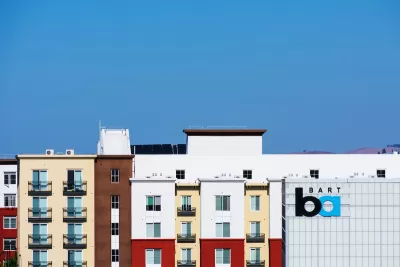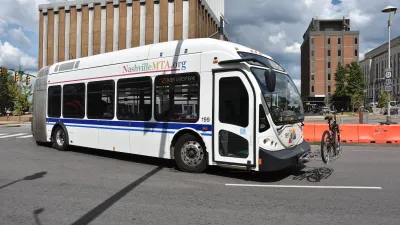Building more housing near transit can improve housing affordability and boost ridership on struggling systems.

A proposed federal law would promote transit-oriented development and prioritize funding for jurisdictions that adopt ‘pro-housing policies’ such as eliminating parking minimums and clearing the way for multifamily construction by reducing minimum lot sizes and raising height limits.
As M. Nolan Gray explains in Bloomberg CityLab, the Build More Housing Near Transit Act of 2023 is designed to promote growth and density in areas near light rail and other transit lines by altering scoring measures for the federal New Starts grant program. “Rapid transit depends on dense clusters of housing and jobs near stations to draw in riders. Yet according to research by Ian Carlton, of MapCraft and ECOnorthwest, just over a third of the 412 transit stations funded through New Starts since 2009 were built in areas with half the prevailing regional density — typically around eight dwelling units per acre.”
Tying transit and housing more closely together would bring benefits for both. “With ridership still below pre-pandemic levels in many US cities, such transit-oriented development isn’t just important for housing affordability — it could also lock in many hundreds of thousands of new riders, bailing out cash-strapped transit agencies.”
FULL STORY: Want More Transit (and Federal Funding)? Build Housing That Supports It

Alabama: Trump Terminates Settlements for Black Communities Harmed By Raw Sewage
Trump deemed the landmark civil rights agreement “illegal DEI and environmental justice policy.”

Planetizen Federal Action Tracker
A weekly monitor of how Trump’s orders and actions are impacting planners and planning in America.

The 120 Year Old Tiny Home Villages That Sheltered San Francisco’s Earthquake Refugees
More than a century ago, San Francisco mobilized to house thousands of residents displaced by the 1906 earthquake. Could their strategy offer a model for the present?

Ken Jennings Launches Transit Web Series
The Jeopardy champ wants you to ride public transit.

BLM To Rescind Public Lands Rule
The change will downgrade conservation, once again putting federal land at risk for mining and other extractive uses.

Indy Neighborhood Group Builds Temporary Multi-Use Path
Community members, aided in part by funding from the city, repurposed a vehicle lane to create a protected bike and pedestrian path for the summer season.
Urban Design for Planners 1: Software Tools
This six-course series explores essential urban design concepts using open source software and equips planners with the tools they need to participate fully in the urban design process.
Planning for Universal Design
Learn the tools for implementing Universal Design in planning regulations.
Clanton & Associates, Inc.
Jessamine County Fiscal Court
Institute for Housing and Urban Development Studies (IHS)
City of Grandview
Harvard GSD Executive Education
Toledo-Lucas County Plan Commissions
Salt Lake City
NYU Wagner Graduate School of Public Service





























